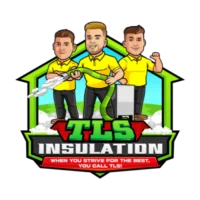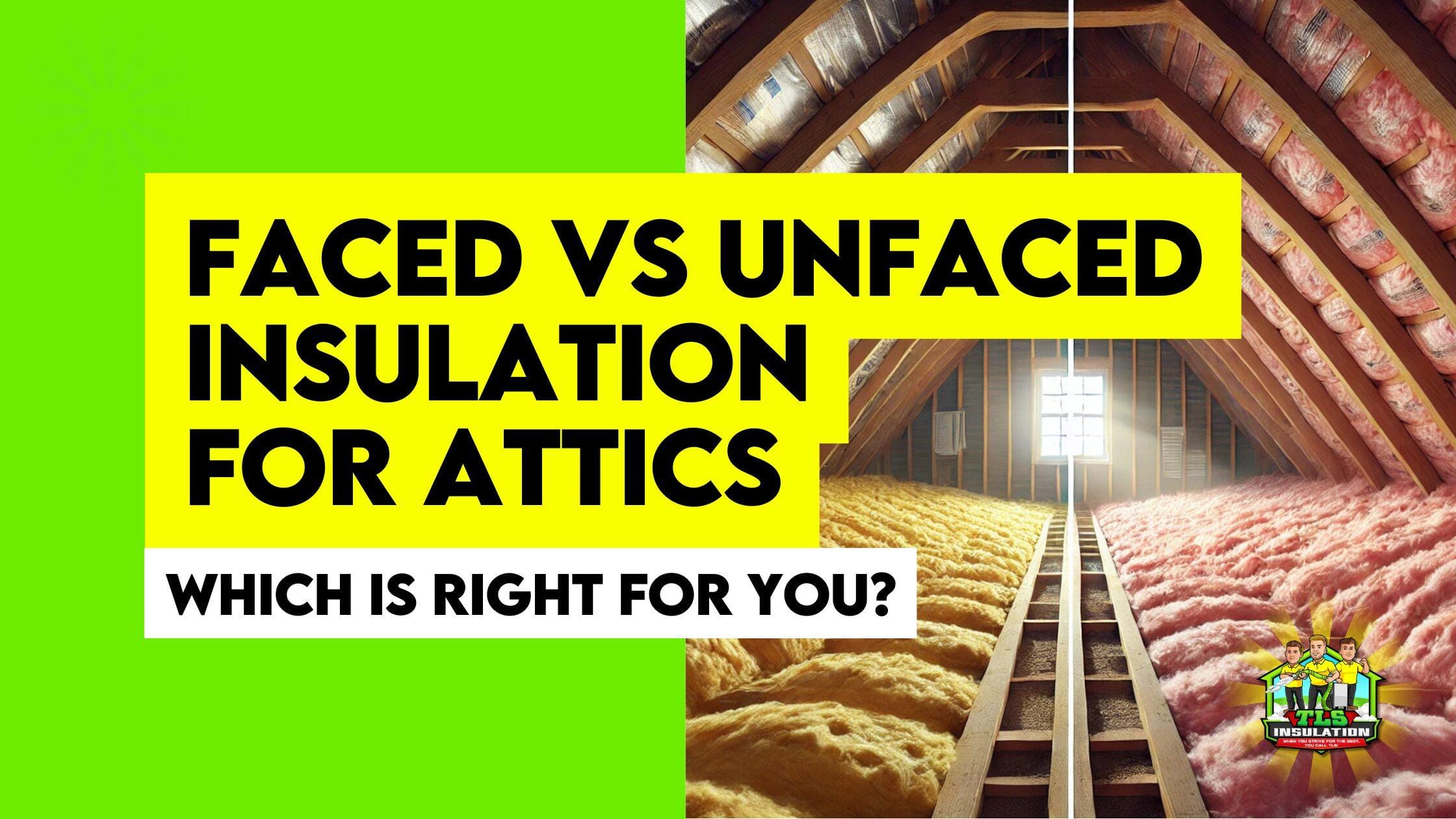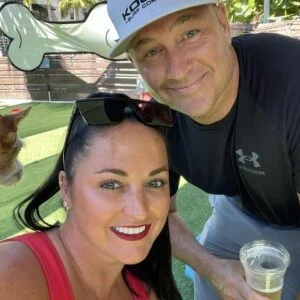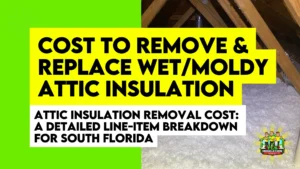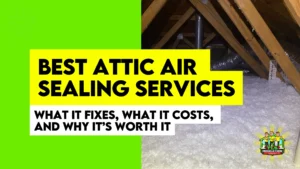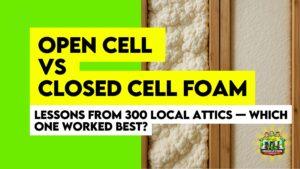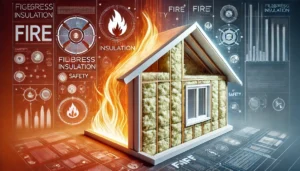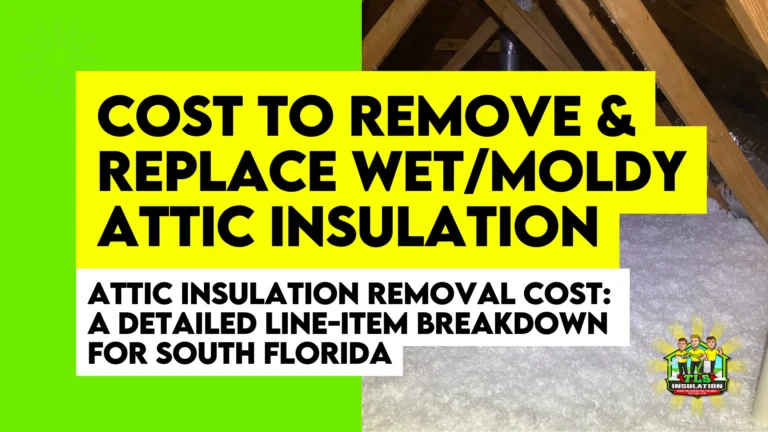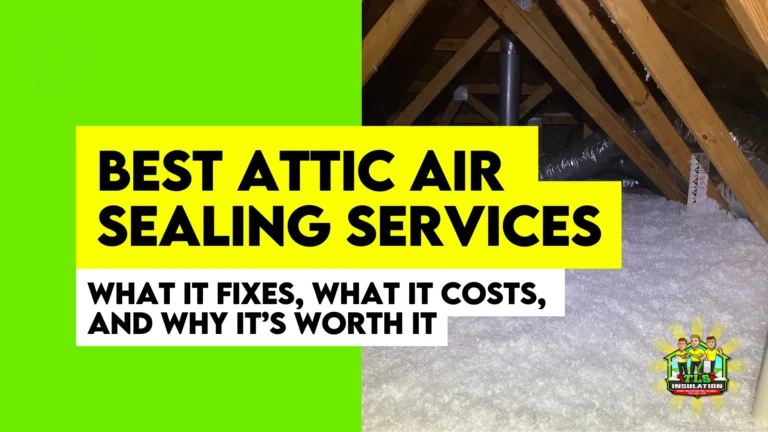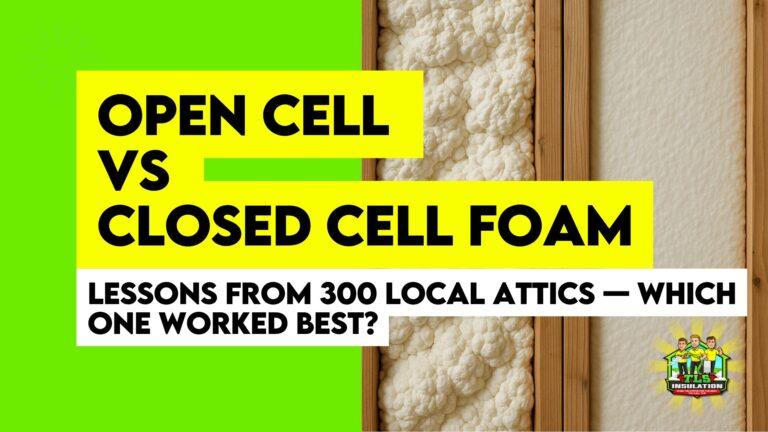One persistent myth about attic insulation is that faced insulation is a “one-size-fits-all” solution because of its built-in vapor barrier. However, The core difference between faced and unfaced insulation is Faced insulation has a kraft paper or foil layer that blocks moisture, making it perfect for first-time attic installations in humid climates.
Unfaced insulation, on the other hand, lacks this barrier, which is actually a benefit while doing retrofits or when stacking layers for higher R-values.
Think of it like this:
- Faced insulation in the attic = Your go-to for new projects where moisture control is non-negotiable.
- Unfaced insulation in attic = The MVP for upgrades, retrofits, or climates where “breathability” matters.
In practice, your choice to use faced or unfaced insulation in attic hinges on three things: your local climate, existing attic setup, and whether you’re prioritizing R-value boosts or mold prevention.
Let’s ditch the myths and break down exactly when to use each, so you can insulate smarter, not harder. If you need expert guidance, check out our attic insulation services for professional recommendations.
What is Faced vs. Unfaced Insulation?
Faced insulation (often called paper-faced insulation) features a built-in vapor barrier—typically kraft paper or foil—bonded to one side. This layer blocks moisture, making it ideal for first-time attic installations where controlling humidity is critical without worrying about attic insulation depth (e.g., humid climates).
Unfaced insulation, or insulation without paper, lacks this barrier. It’s pure fiberglass or mineral wool, designed for layering over existing insulation or in dry climates where breathability prevents trapped moisture.
Key Difference:
- Faced: Moisture shield + thermal protection (great for new attics).
- Unfaced: Flexible, code-compliant retrofits (avoids double vapor barriers).
When to Use Faced Insulation vs. Unfaced Insulation in Attic
Faced or unfaced insulation in attic projects depends on your climate, attic setup, and moisture risks. Here’s how to decide:
When to Use Faced Insulation:
Faced insulation with its kraft paper or foil vapor barrier is ideal for new installations in attics exposed to high humidity. In states like Florida or Louisiana, the vapor barrier blocks warm, moist indoor air from condensing in cooler attic spaces.
It’s also critical in cold climates (e.g., Minnesota) to prevent ice dams by keeping attic temperatures stable. Building codes often require faced insulation for first-time attic projects to ensure moisture control.
The faced variant of insulation comes at a higher price, so if you’re asking yourself how much it costs to insulate an attic, it may be the right choice for those willing to spend a bit more for added benefits
When to Use Unfaced Insulation
Unfaced insulation (no vapor barrier) is better for retrofitting or adding layers over existing insulation. In dry states like Arizona or Nevada, unfaced batts allow attics to “breathe,” avoiding trapped moisture.
It’s also the go-to for DIYers boosting R-value without violating codes by creating double vapor barriers. Use unfaced insulation in attics with proper ventilation or existing vapor barriers.
Should Attic Insulation Be Faced or Unfaced?
So if you are still confused about “Do I Need Faced or Unfaced Insulation?”. The answer depends on your attic’s location and existing setup:
Faced insulation is a must if:
- You live in humid or cold climates (e.g., Texas winters).
- Your attic lacks a vapor barrier (common in older homes).
- Local building codes mandate moisture control (check IRC Section R806.5).
Unfaced insulation is better if:
- You’re layering over existing faced insulation.
- Your attic has ventilation (soffit + ridge vents).
- You’re in a dry climate where condensation is rare.
| Aspect | Faced Insulation | Unfaced Insulation |
| Vapor Barrier | Includes kraft paper or foil facing to block moisture. | No vapor barrier—ideal for breathable attics. |
| R-Value | Same as unfaced (e.g., R-13 to R-30), but barrier enhances moisture protection. | Same R-value but relies on attic ventilation for moisture control. |
| Installation | Used for the first layer in new attics. Must face the warm side (toward the living space). | Used for adding layers over existing insulation. No directional rules. |
| Cost | Slightly higher due to the vapor barrier (approx. $0.50–$1.50 per sq. ft.). | Cheaper (approx. $0.40–$1.20 per sq. ft.)—no added barrier material. |
| Building Codes | Often required in humid/cold climates (e.g., IRC Section R806.5). | Mandatory when retrofitting over existing faced insulation. |
| Climate Suitability | Best for humid (e.g., Florida) or cold climates (e.g., Minnesota). | Ideal for dry (e.g., Arizona) or mixed climates with good ventilation. |
| Use Cases | New construction, first-time insulation, moisture-prone areas. | Retrofits, attic upgrades, attics with existing vapor barriers. |
Can I Use Unfaced Insulation in the Attic?
Yes! Unfaced insulation in attic is safe and practical in these scenarios:
- Upgrading Existing Insulation: Adding unfaced batts over old faced insulation avoids trapping moisture between barriers.
- Hot/Dry Climates: In states like California or New Mexico, unfaced insulation lets humidity escape, reducing mold risks.
- Unheated Attics: Without HVAC systems, unfaced insulation allows natural airflow, preventing moisture buildup.
- Code Compliance: If your attic already has a vapor barrier (e.g., polyethylene sheeting), unfaced insulation is required by code. Not sure if your attic meets the right requirements? Get a free insulation assessment today!
Which Way Should Insulation Face: Insulation Paper In or Out?
The paper side of insulation (the vapor barrier) must face the warm, conditioned side of your home, typically downward toward your living space in ceilings or upward in floors. This placement blocks warm, moisture-laden indoor air from migrating into cooler attic spaces, where it can condense and cause mold, wood rot, or reduced R-value.
How Do You Place Faced Insulation in Attic:
- Climate-Driven Rules:
In cold climates (e.g., Minnesota), the paper-faced insulation’s barrier faces inward to block indoor humidity from reaching the cold attic.
In hot, humid climates (e.g., Florida), the barrier still faces the conditioned space to prevent outdoor moisture from infiltrating through the attic.
- Building Codes:
Codes like IRC R806.5 mandate that vapor barriers face the “warm-in-winter” side. For faced insulation in attic installations, this means the paper side always points toward your heated/cooled living areas.
- Installation Pitfalls:
Attic insulation paper up or down mistakes (e.g., paper facing the attic) trap moisture, degrading insulation and risking structural damage.
Never install faced insulation over existing vapor barriers—this creates “double barriers,” violating codes and trapping humidity.
- Exceptions:
In unheated attics (e.g., storage spaces), skip faced insulation entirely. Use unfaced insulation to allow moisture to escape naturally.
Pro Tip: Confused about direction? Ask: “Where’s the heat?” The paper side of insulation always faces the warmth, whether it’s your living room below or heated floors above.
FAQs (Frequently Asked Questions)
Is faced insulation a vapor barrier, and can I use unfaced insulation in the attic?
Yes, faced insulation includes a vapor barrier (kraft paper/foil) to block moisture, while unfaced insulation is ideal for attics without existing barriers or in dry climates needing breathability.
Can I replace old faced insulation with unfaced insulation in my attic?
Yes, but ensure no existing vapor barriers remain—unfaced insulation avoids “double barriers” and complies with building codes during retrofits.
What’s the main difference between faced and unfaced attic insulation?
Faced insulation has a built-in vapor barrier for moisture control, while unfaced insulation lacks one, making it better for layering or ventilated attics.
Does building code allow unfaced insulation in attics?
Yes, unfaced insulation is code-compliant for retrofits, attics with existing barriers, or climates where moisture risks are low.
Which insulation is better for humid climates: faced or unfaced?
Faced insulation is critical in humid climates (e.g., Florida) to prevent condensation, while unfaced suits dry regions (e.g., Arizona) with proper ventilation.

